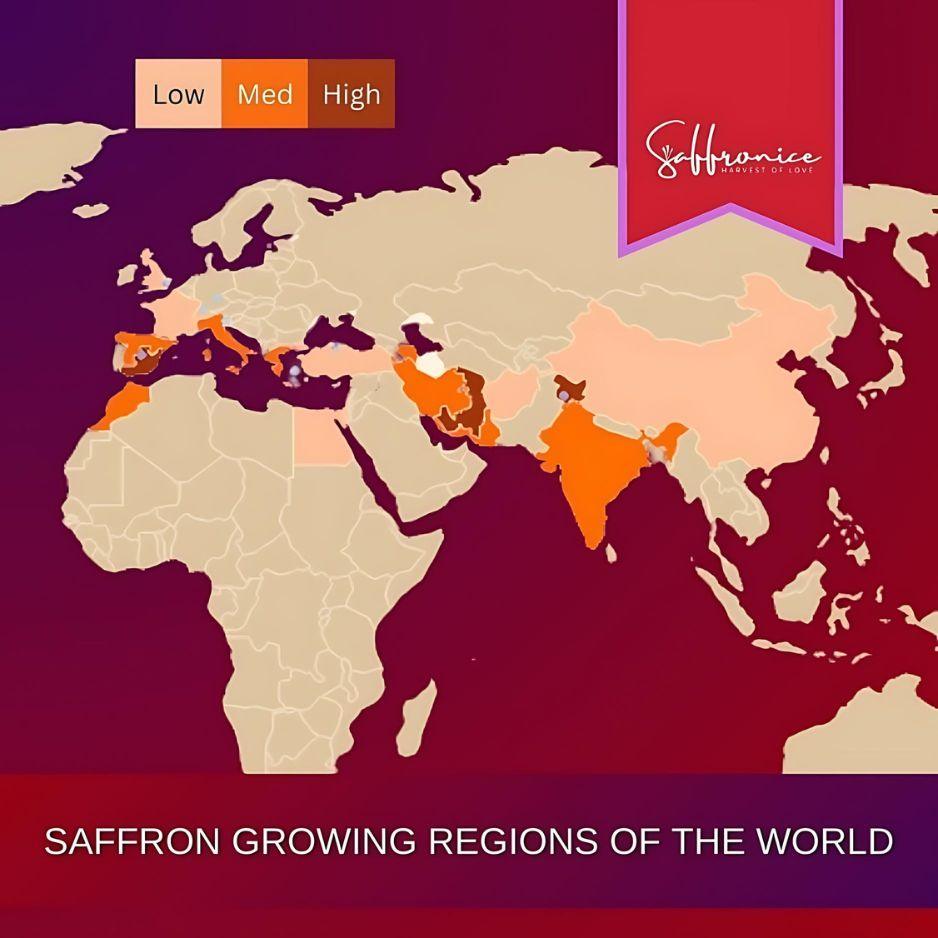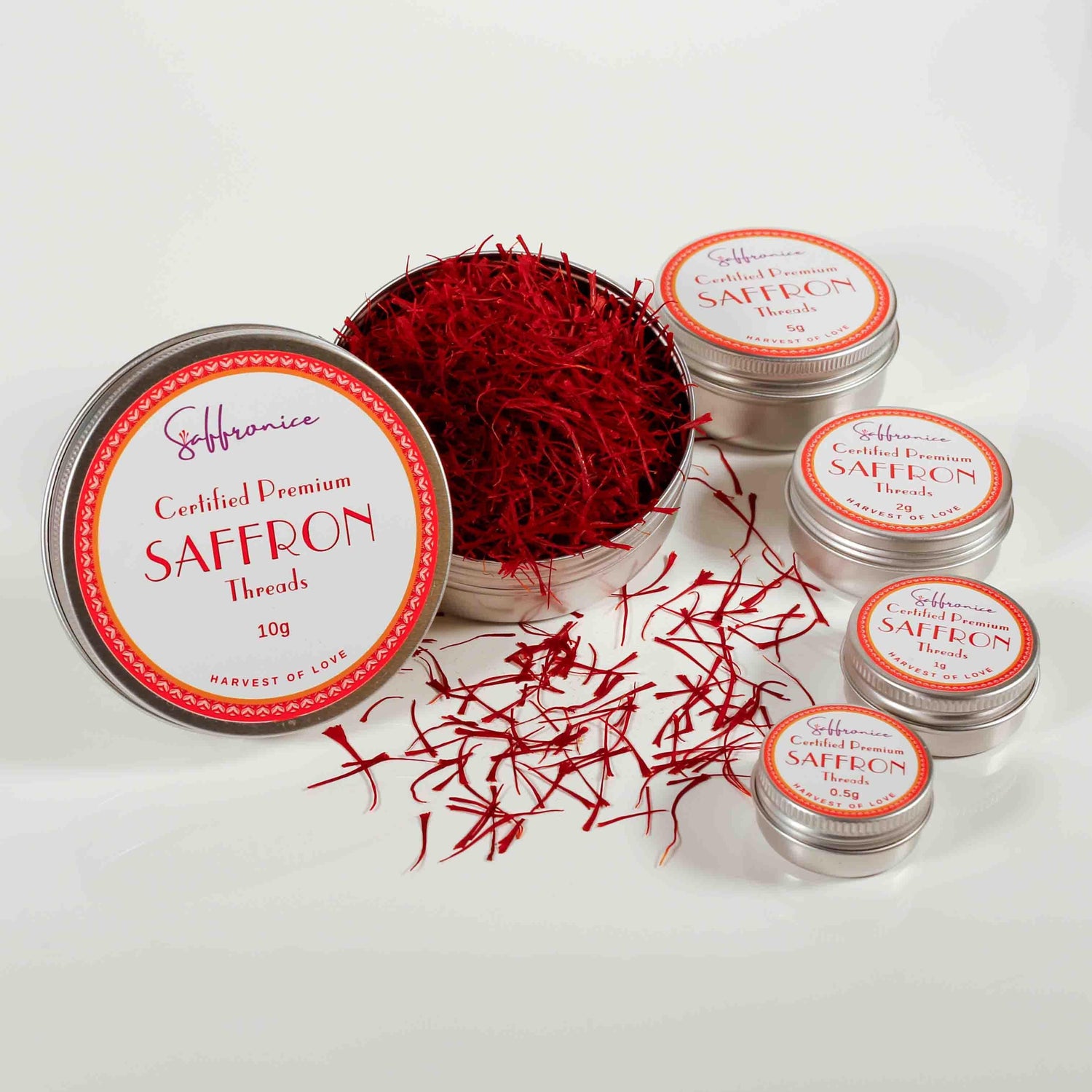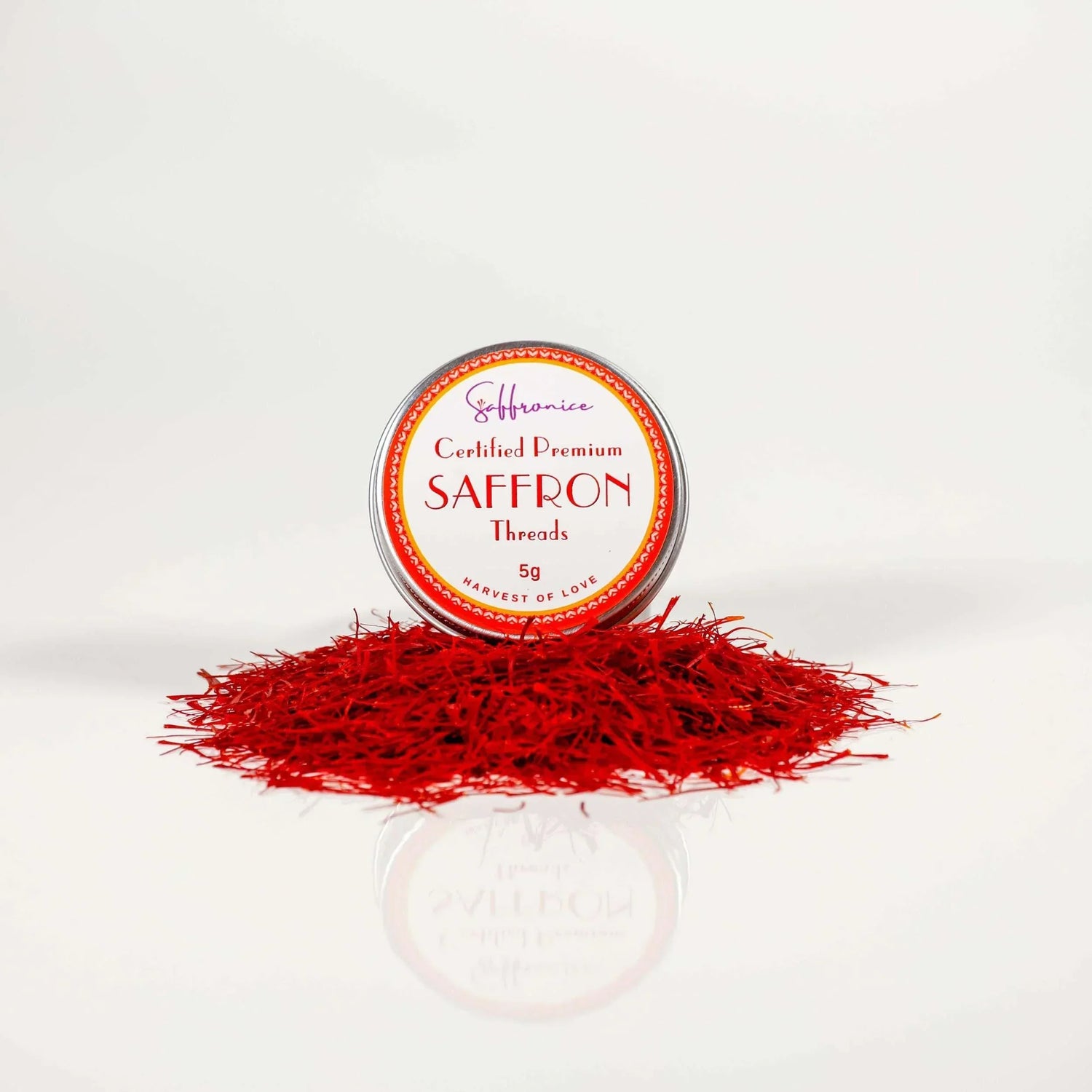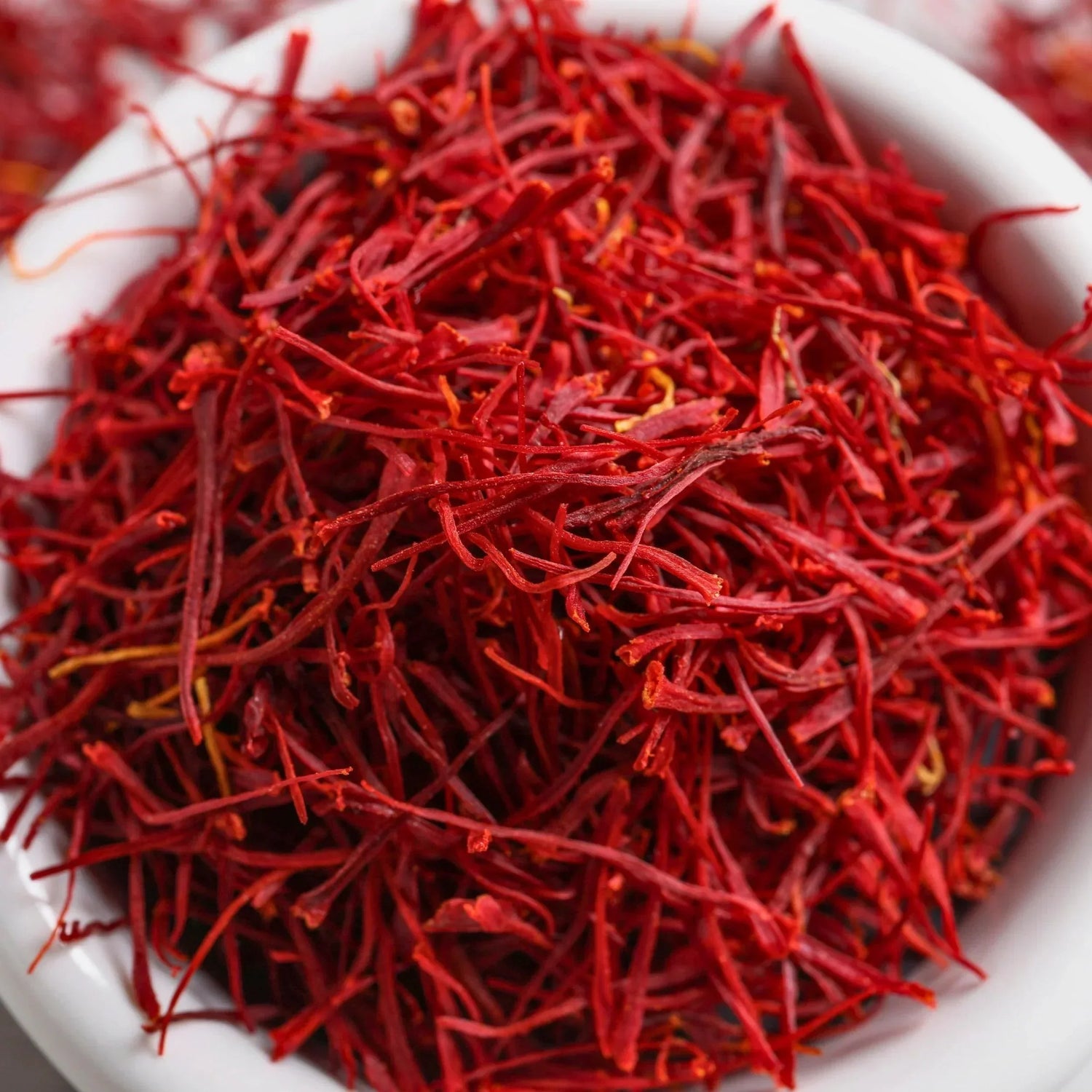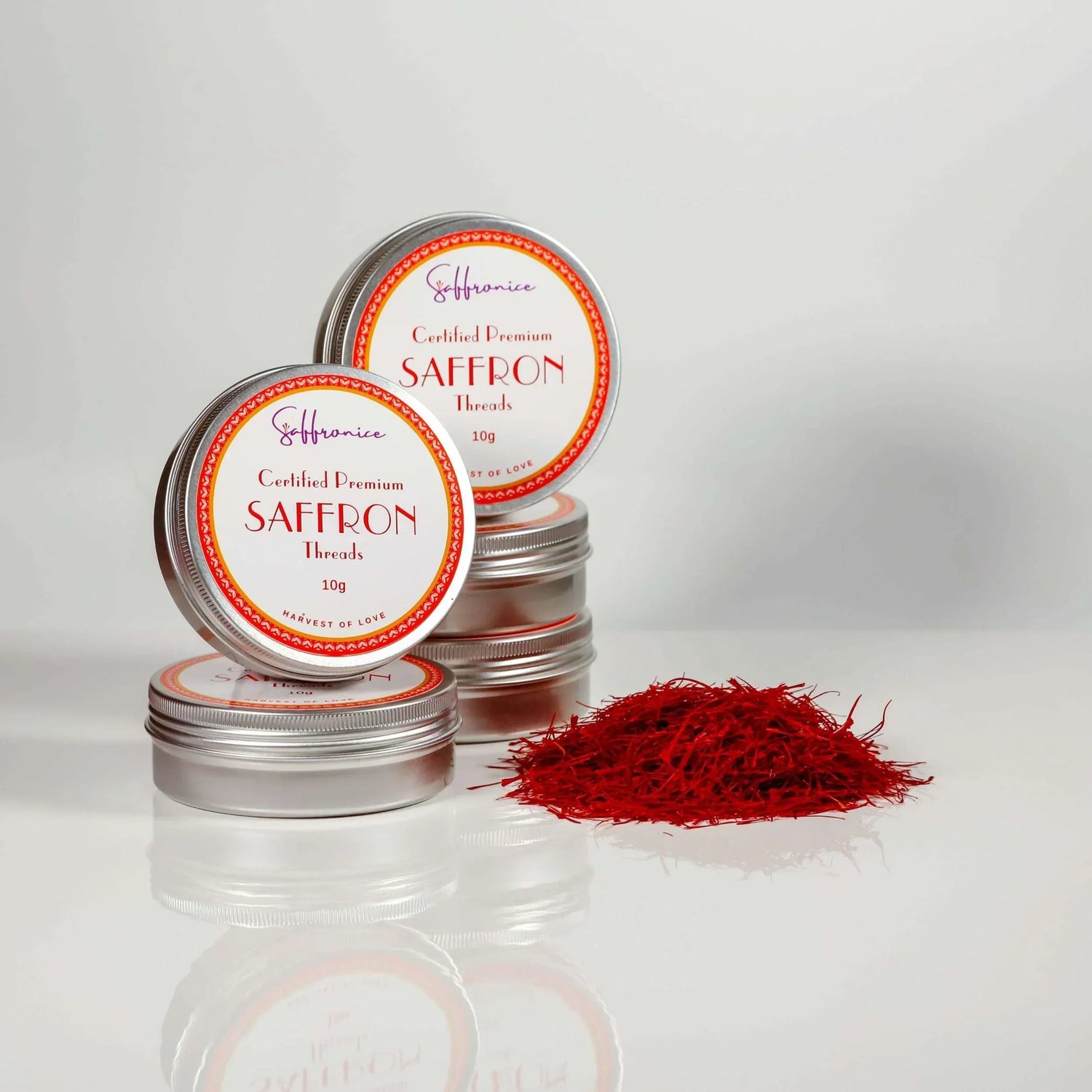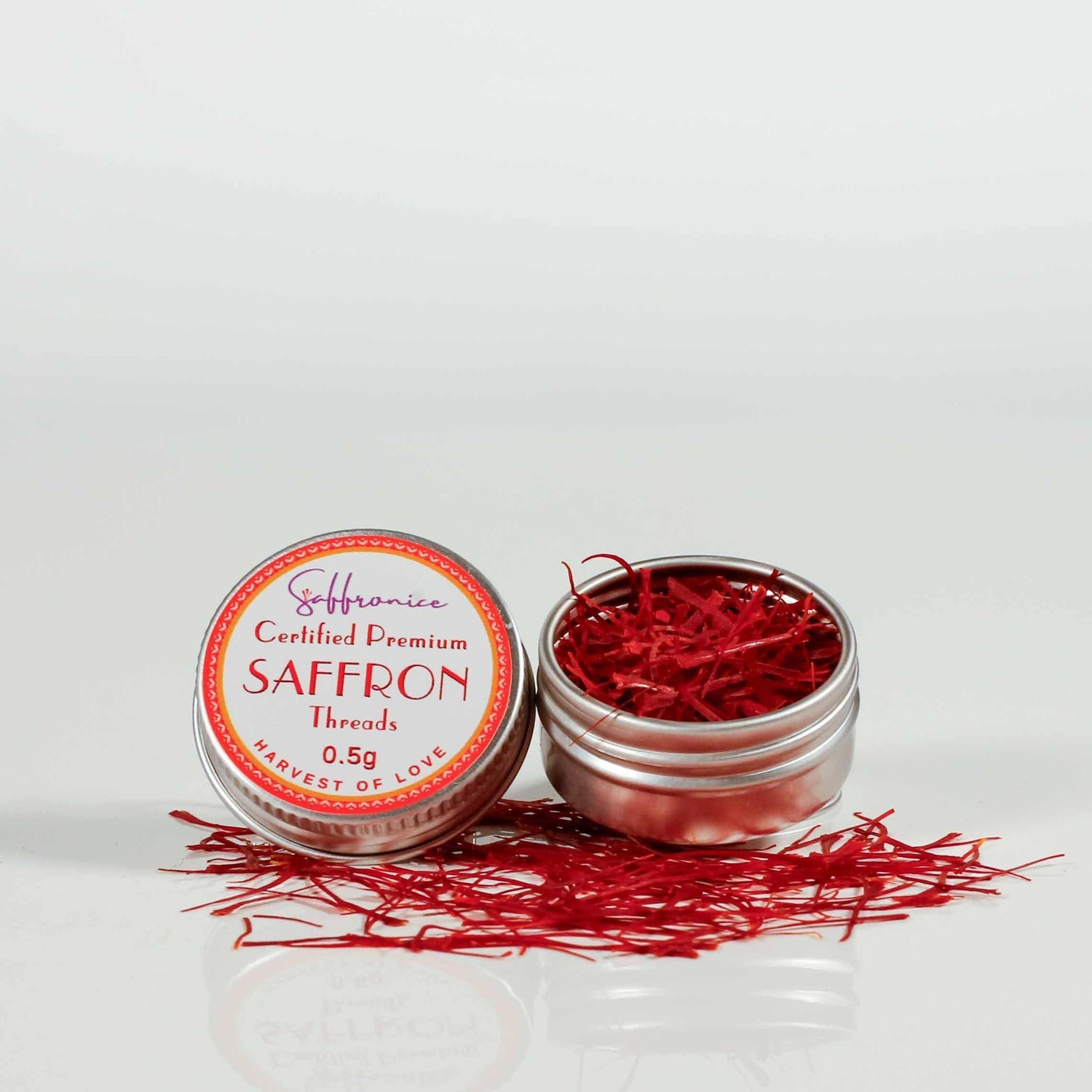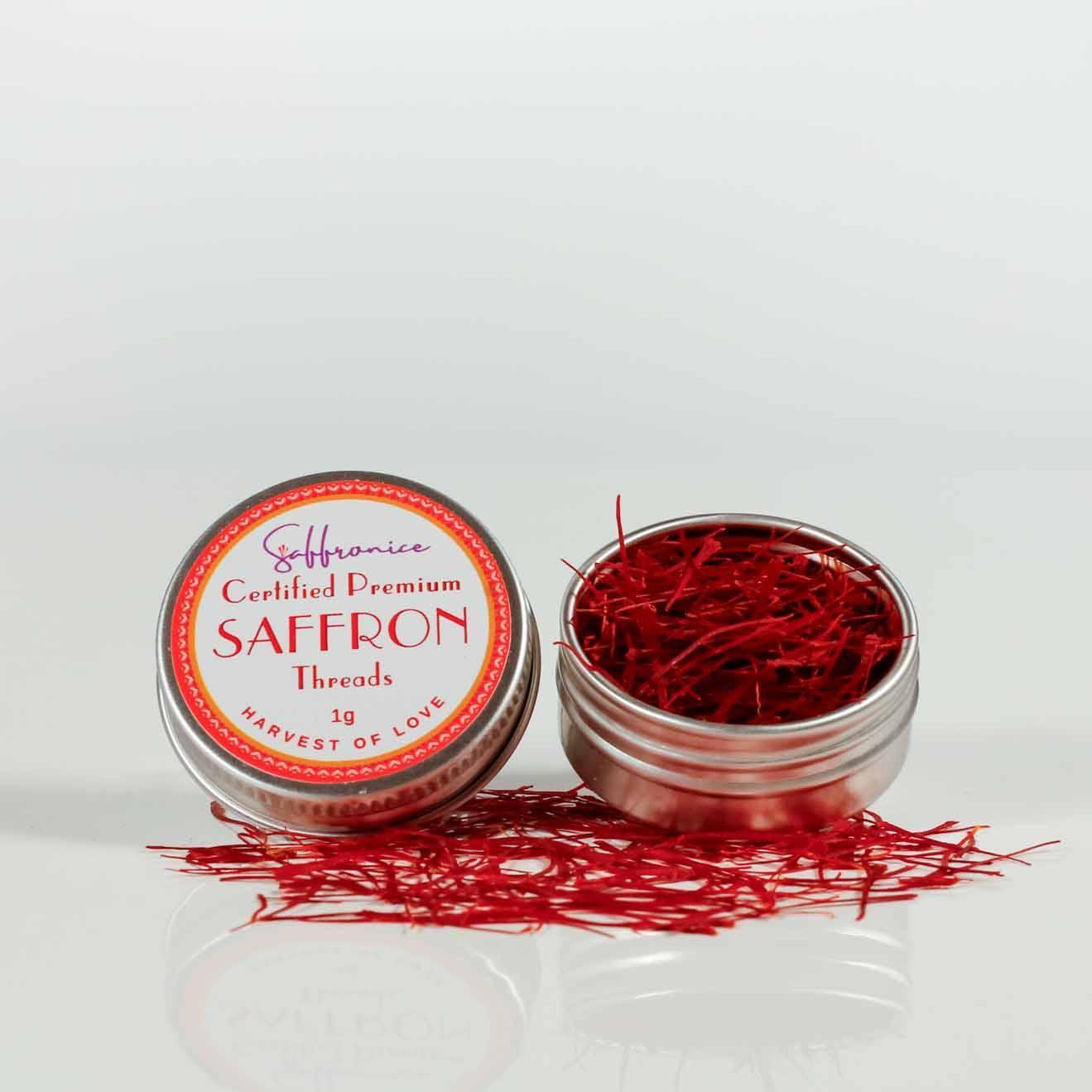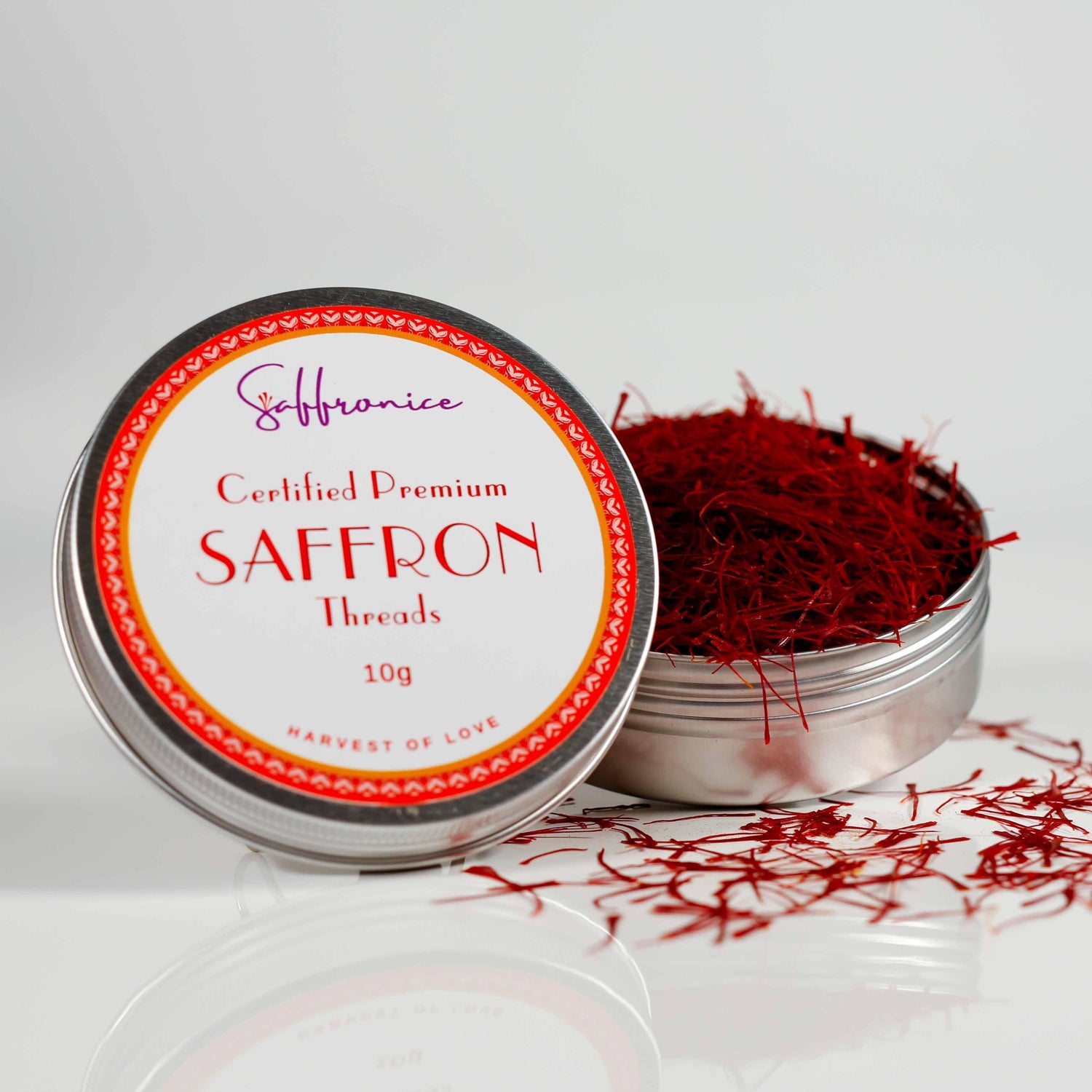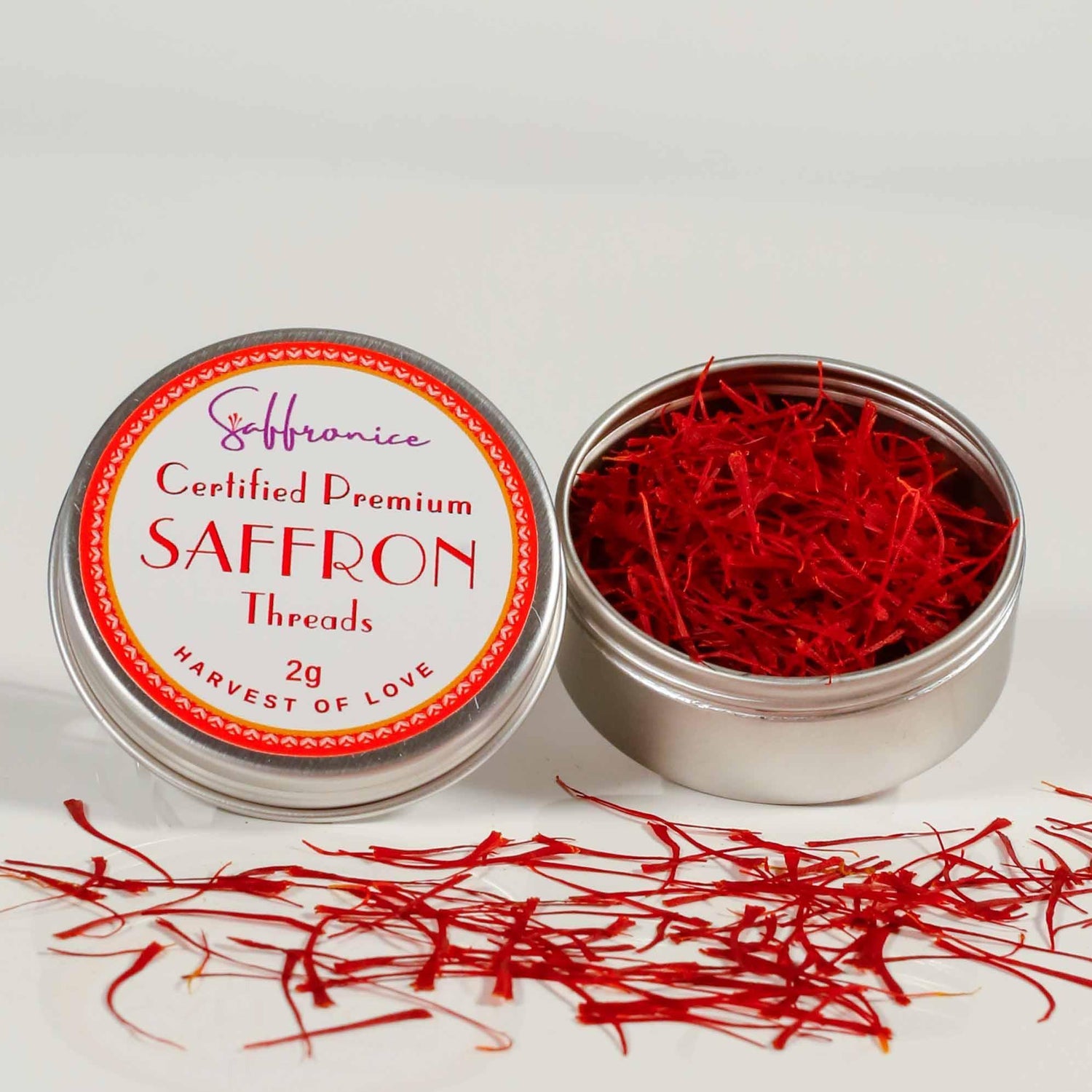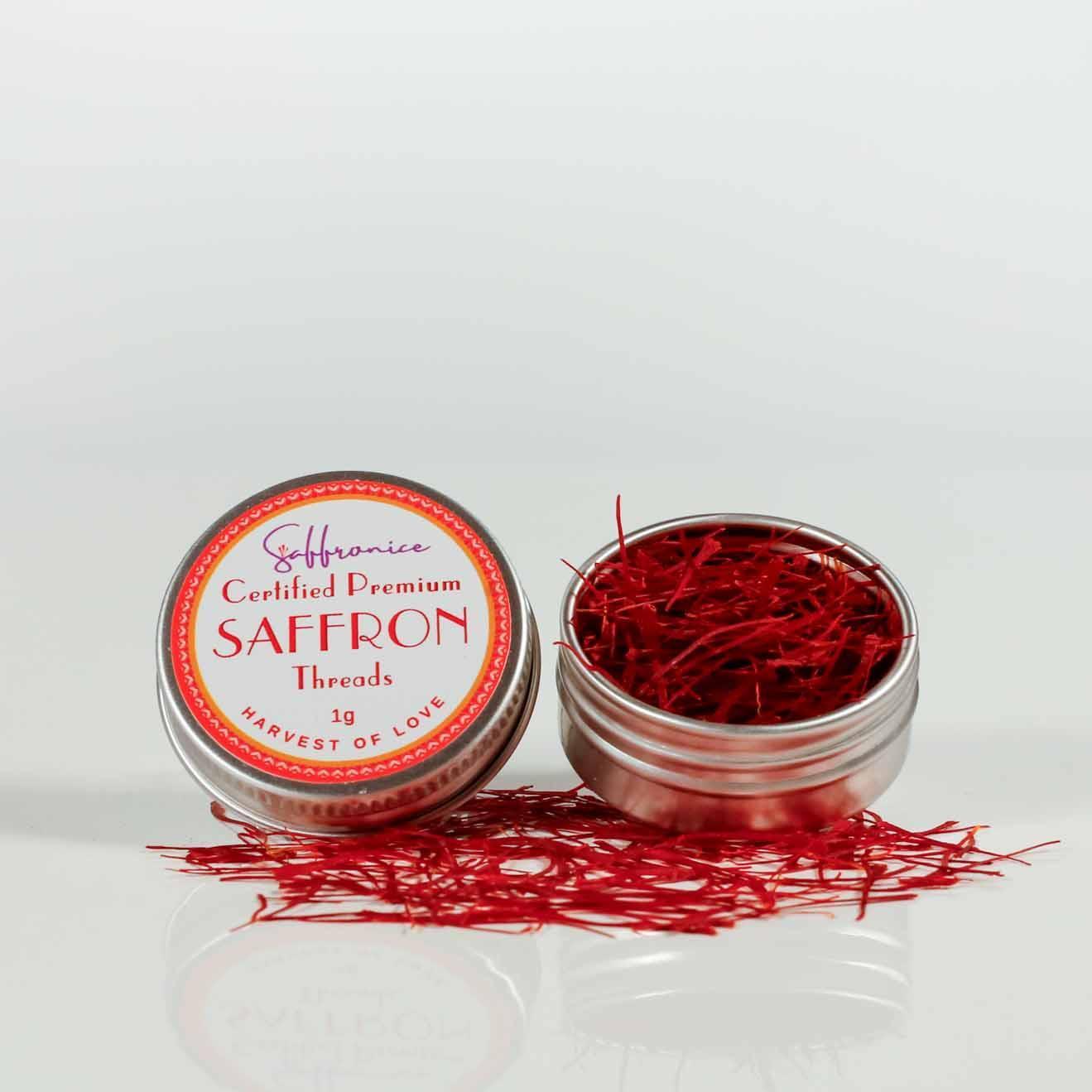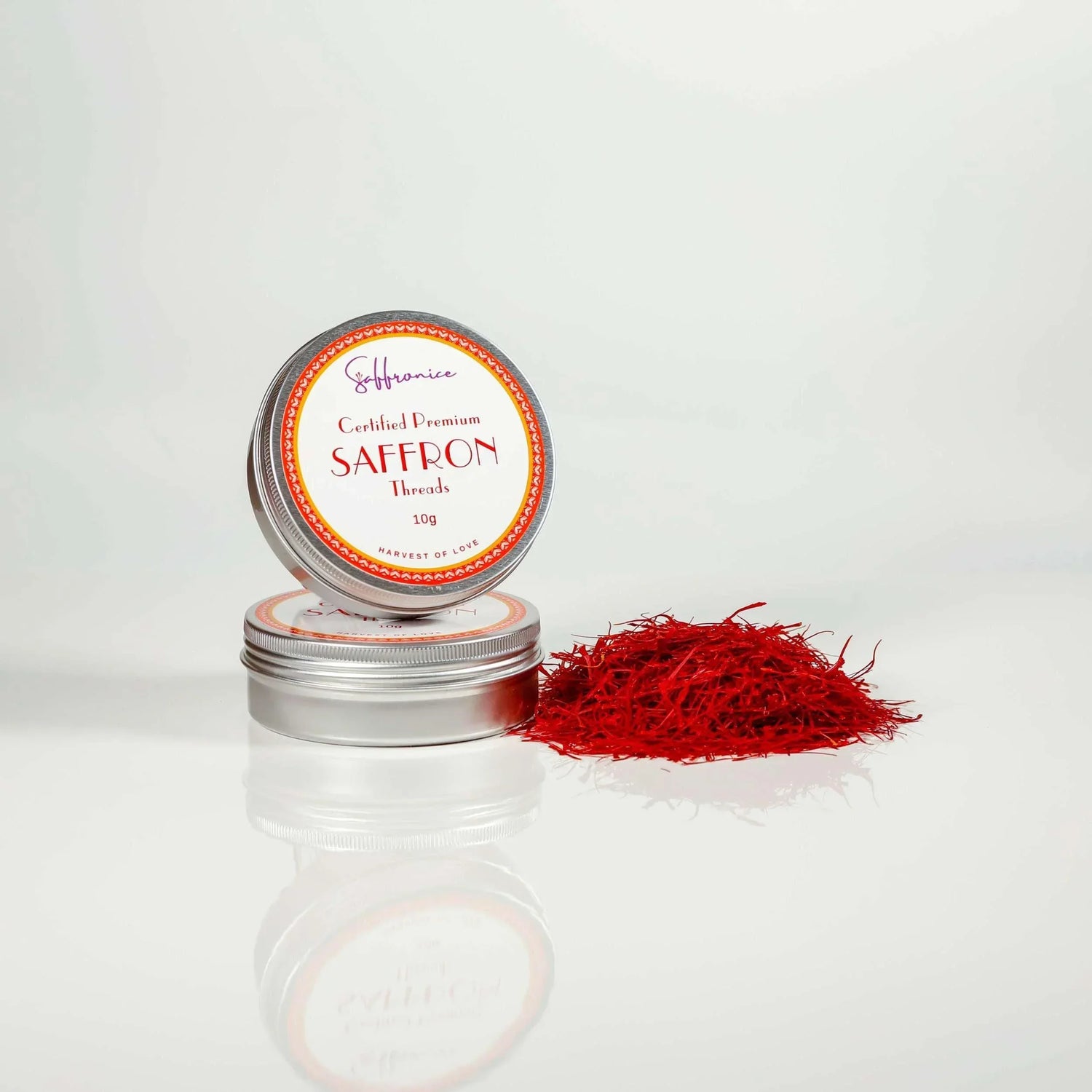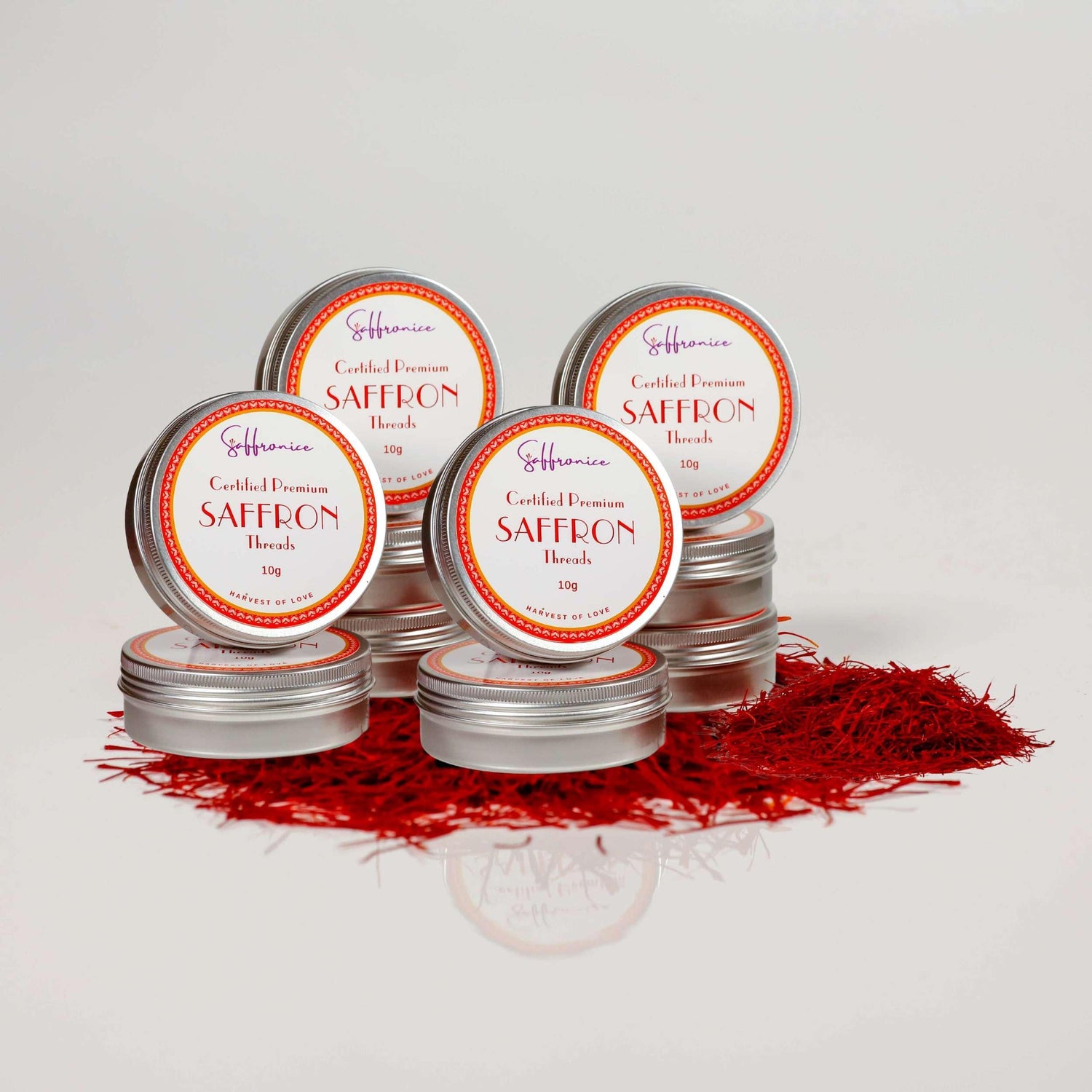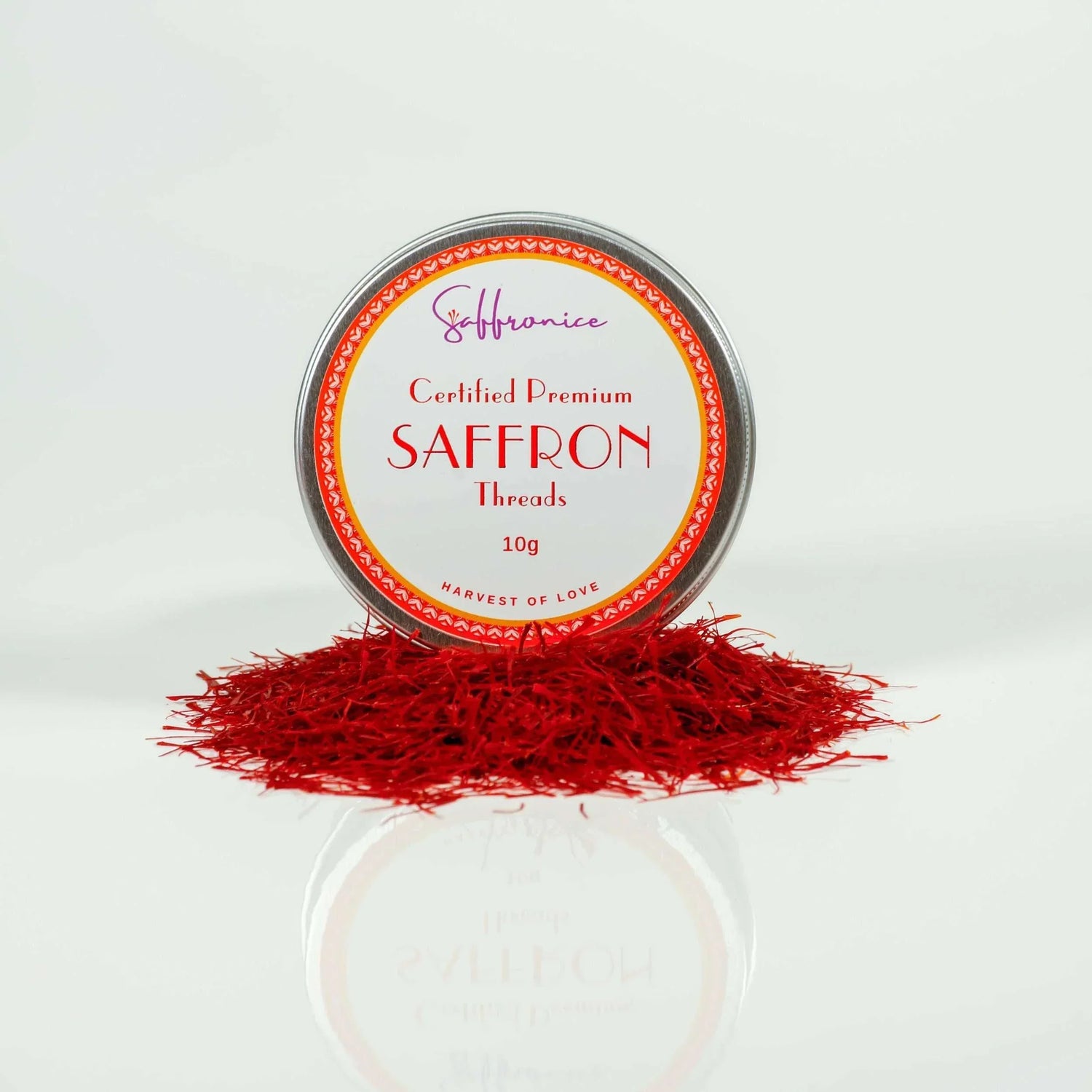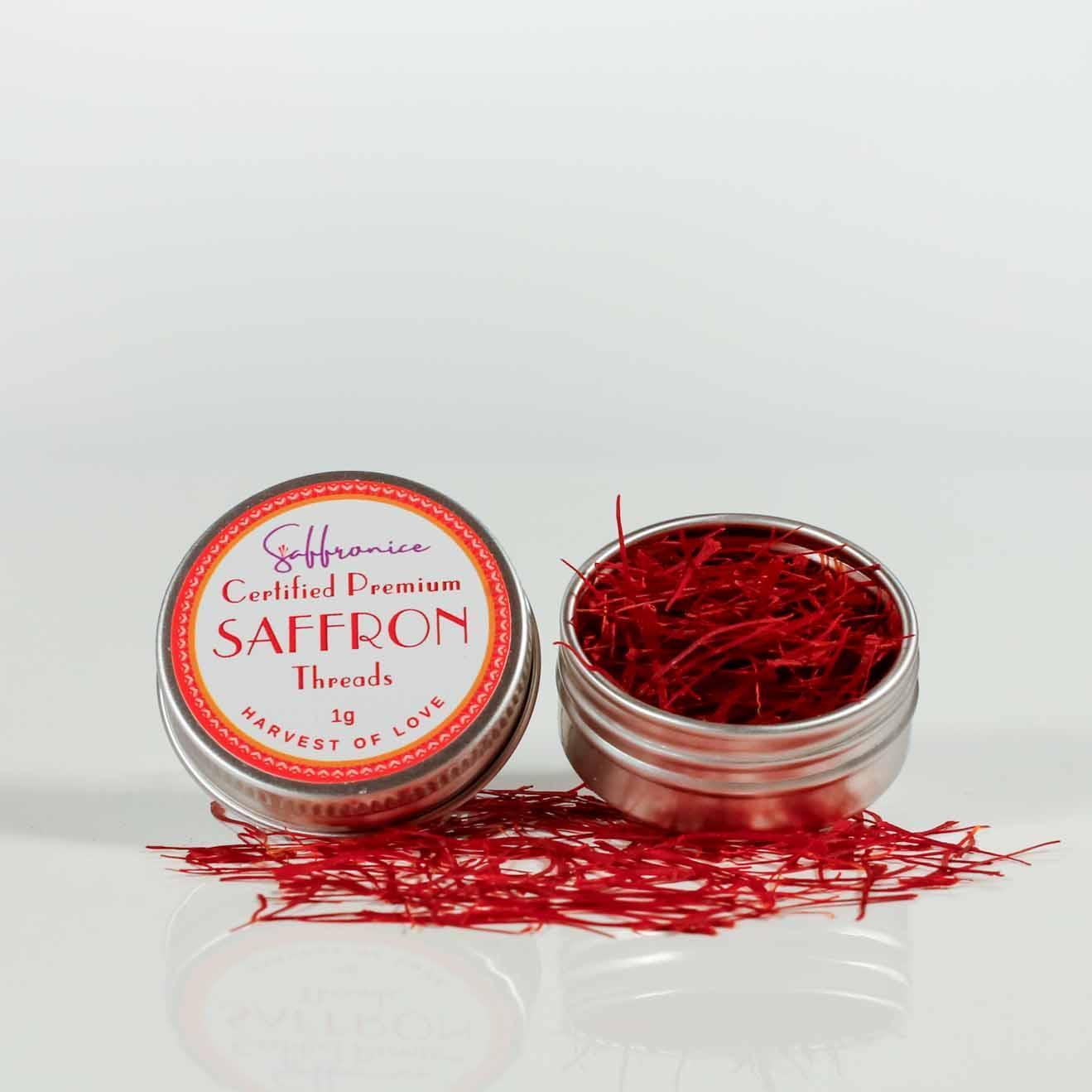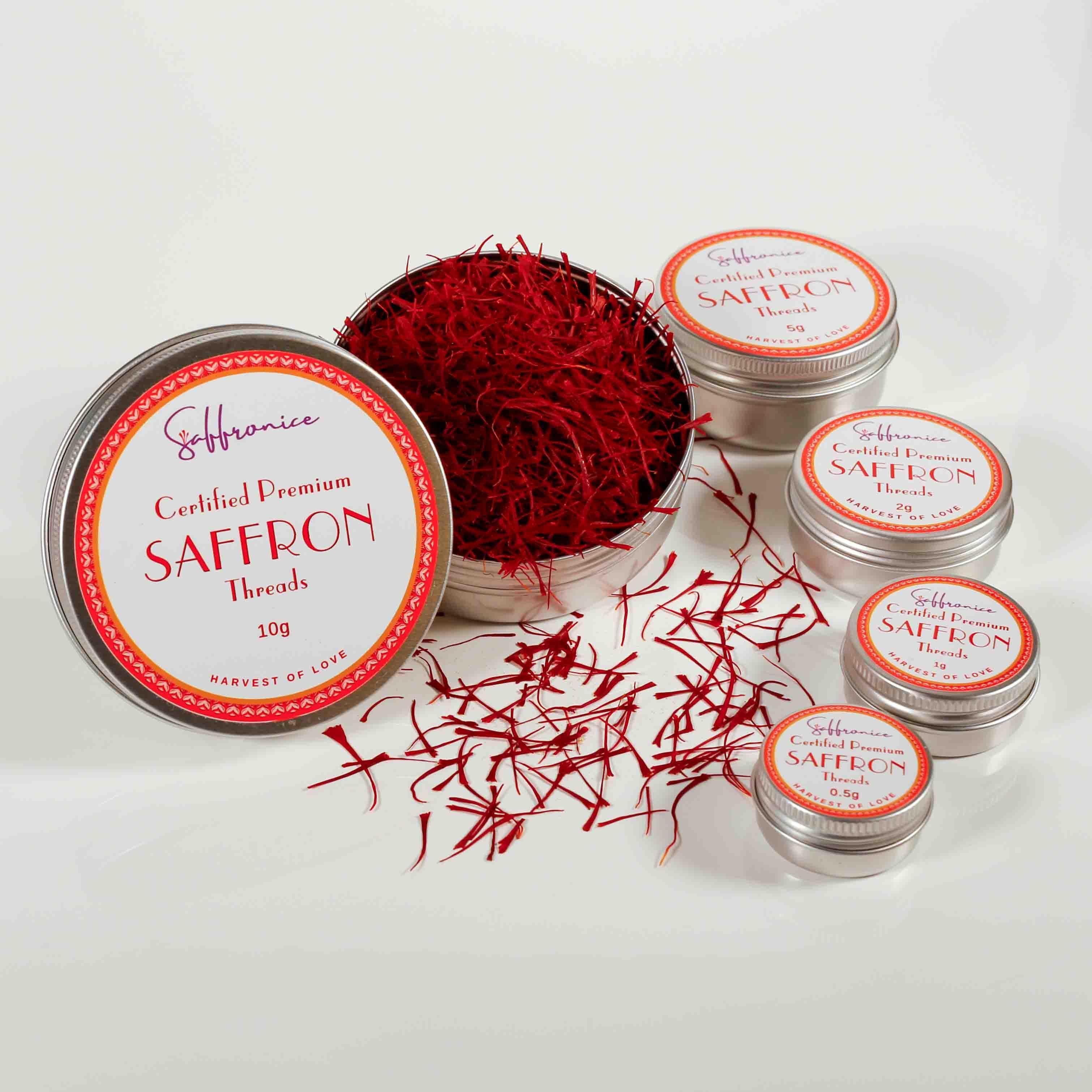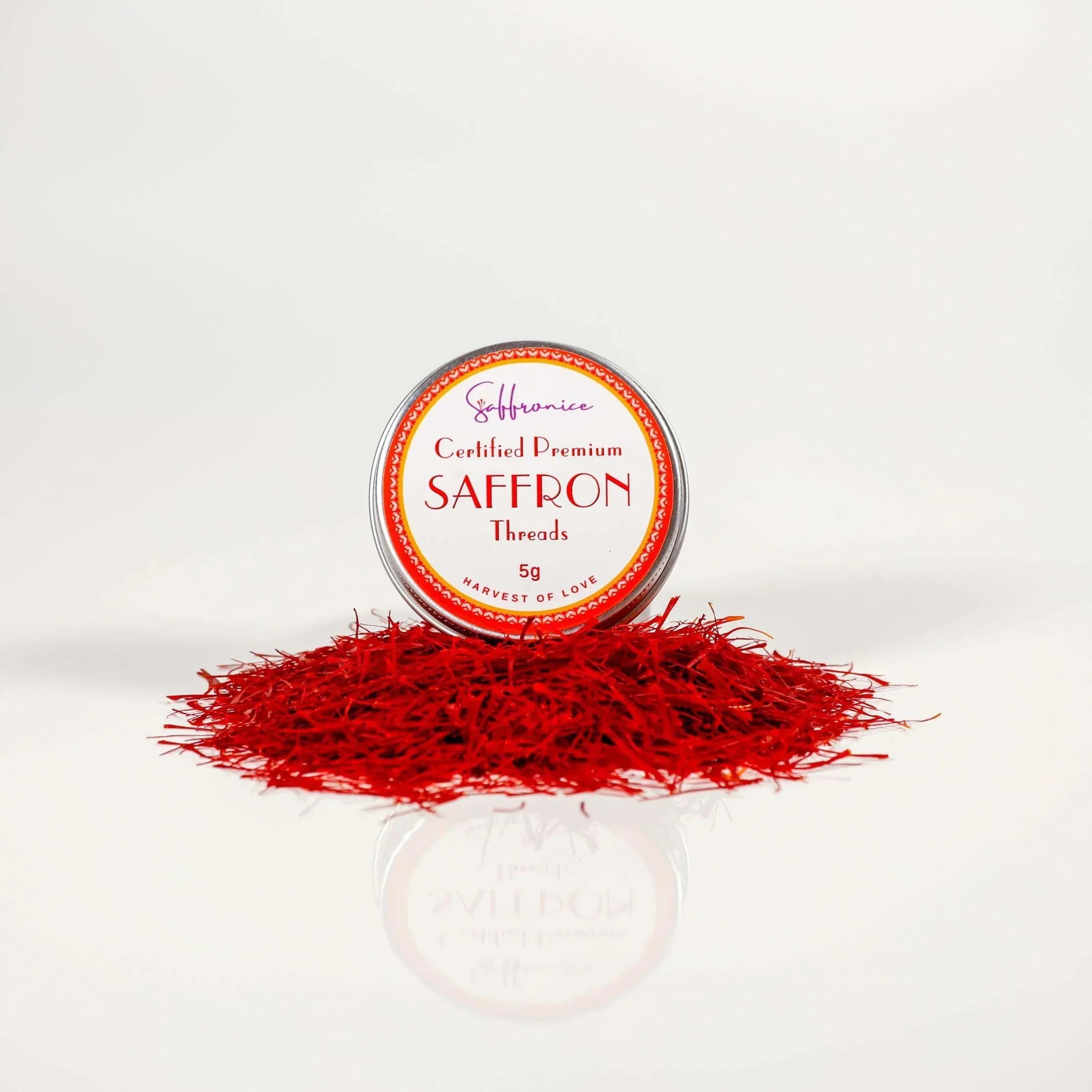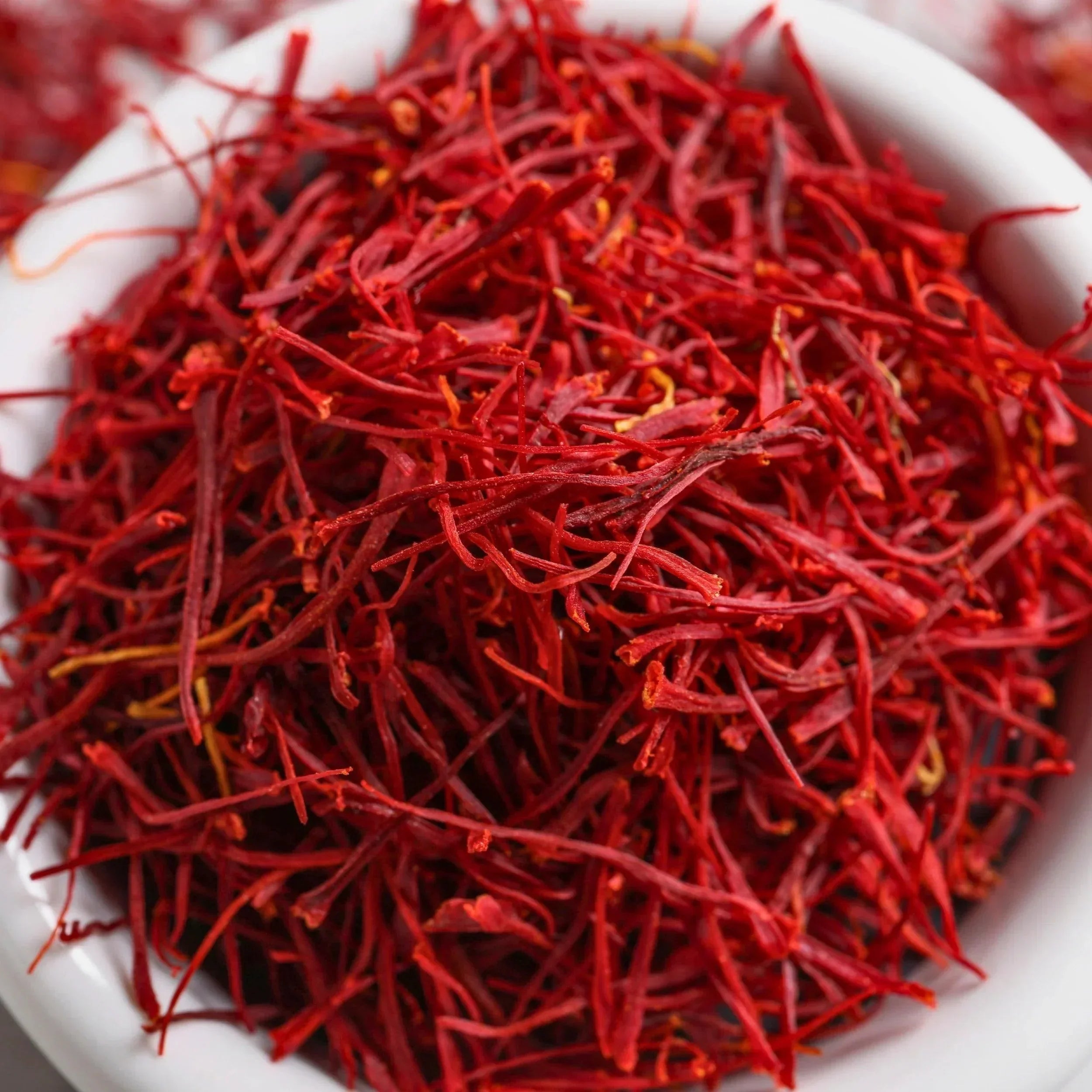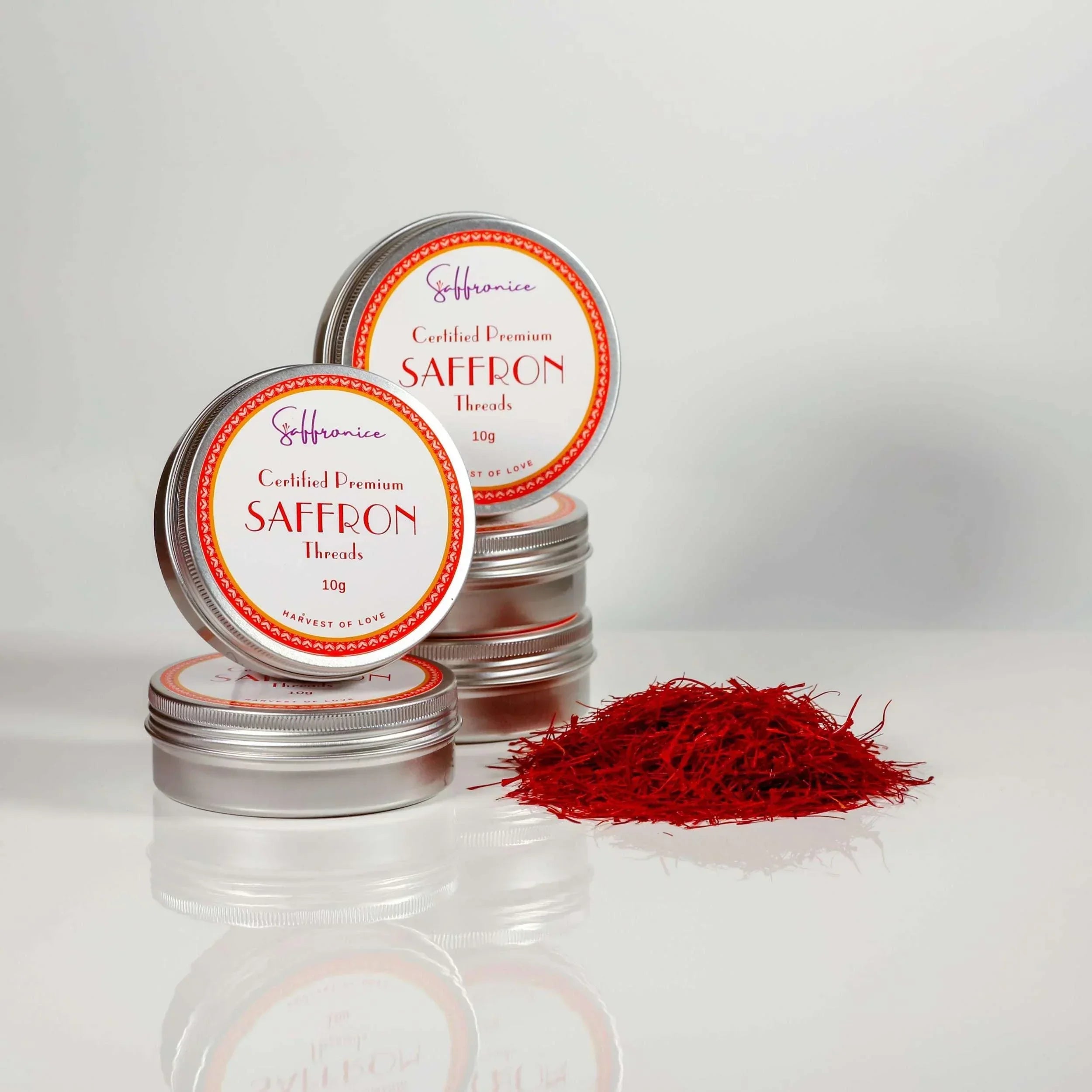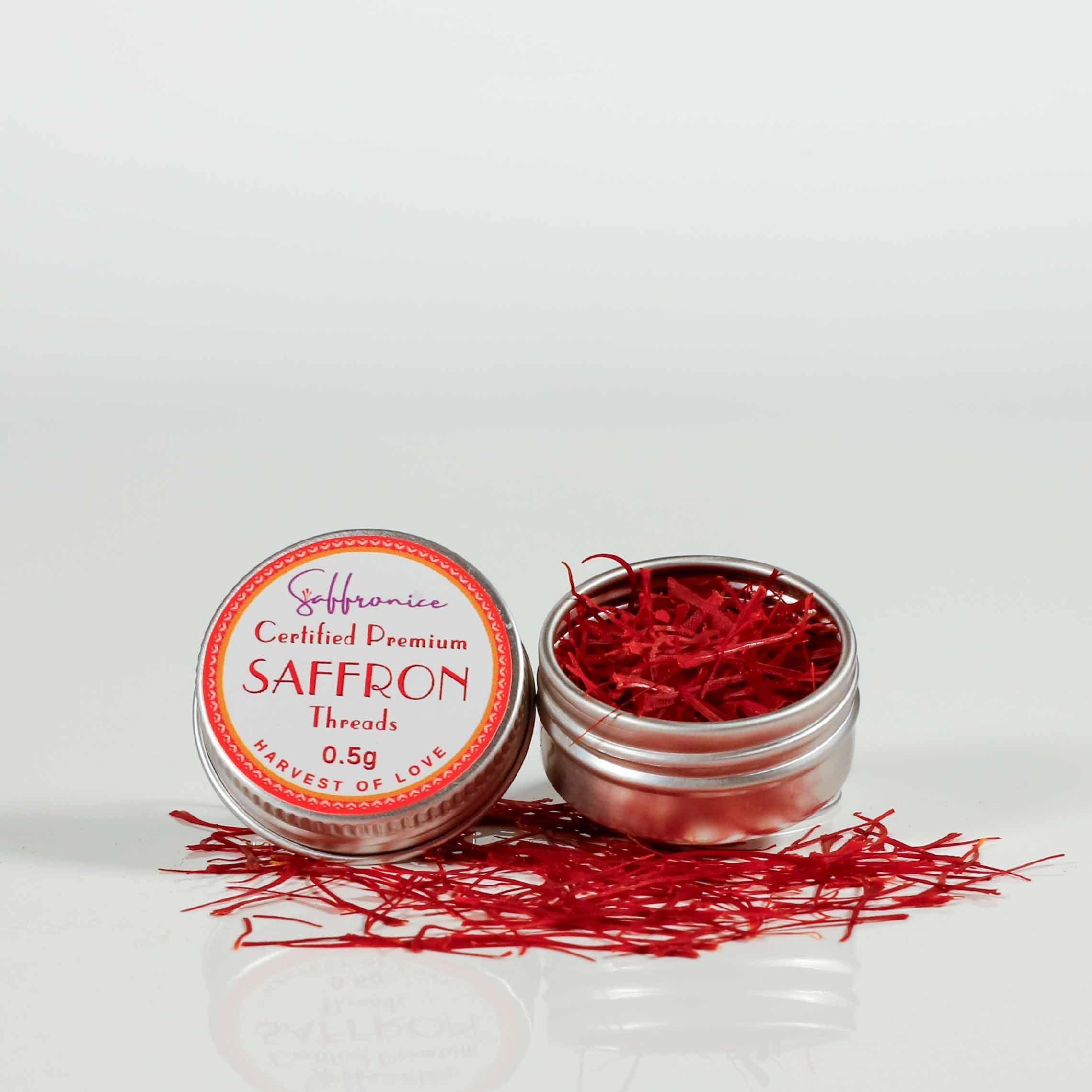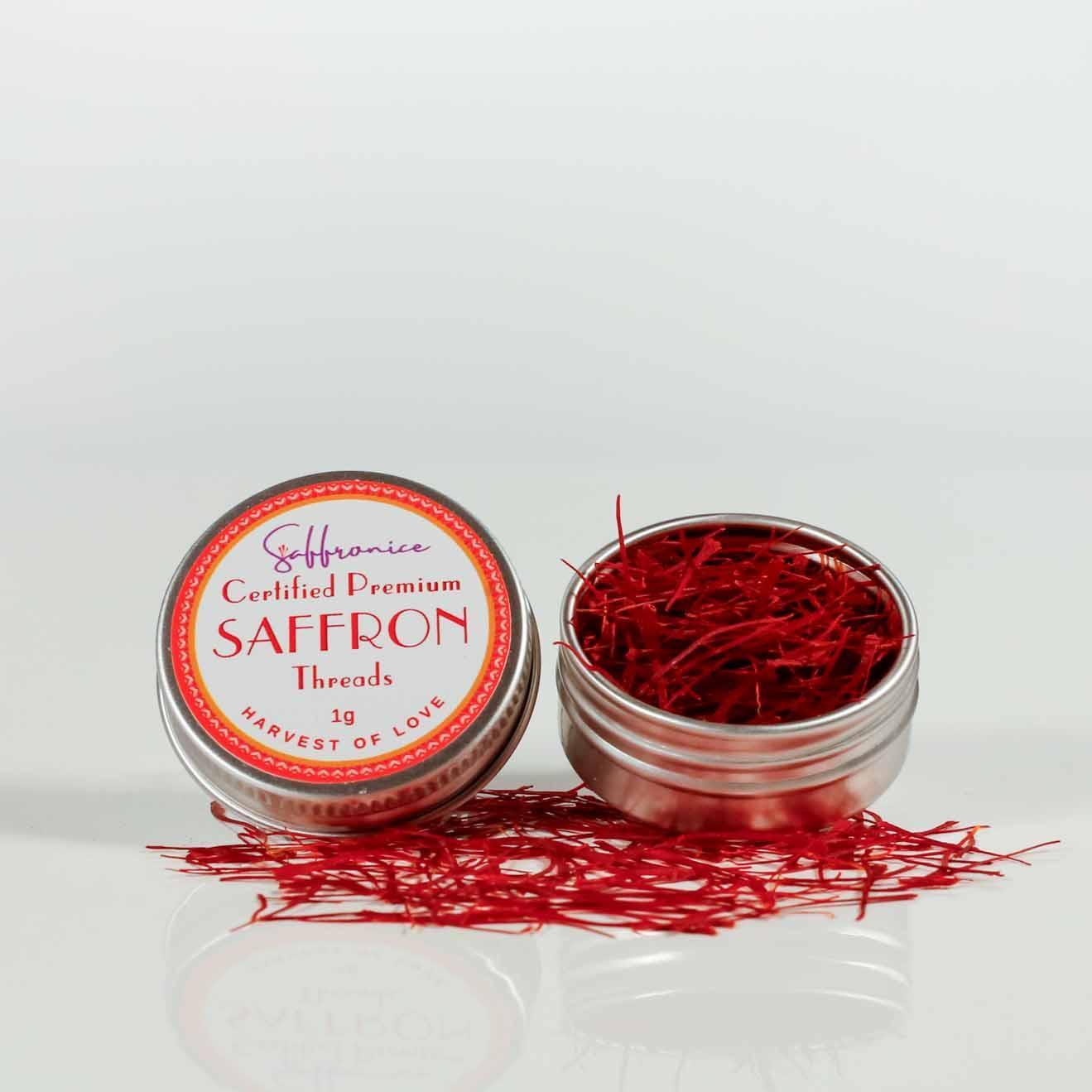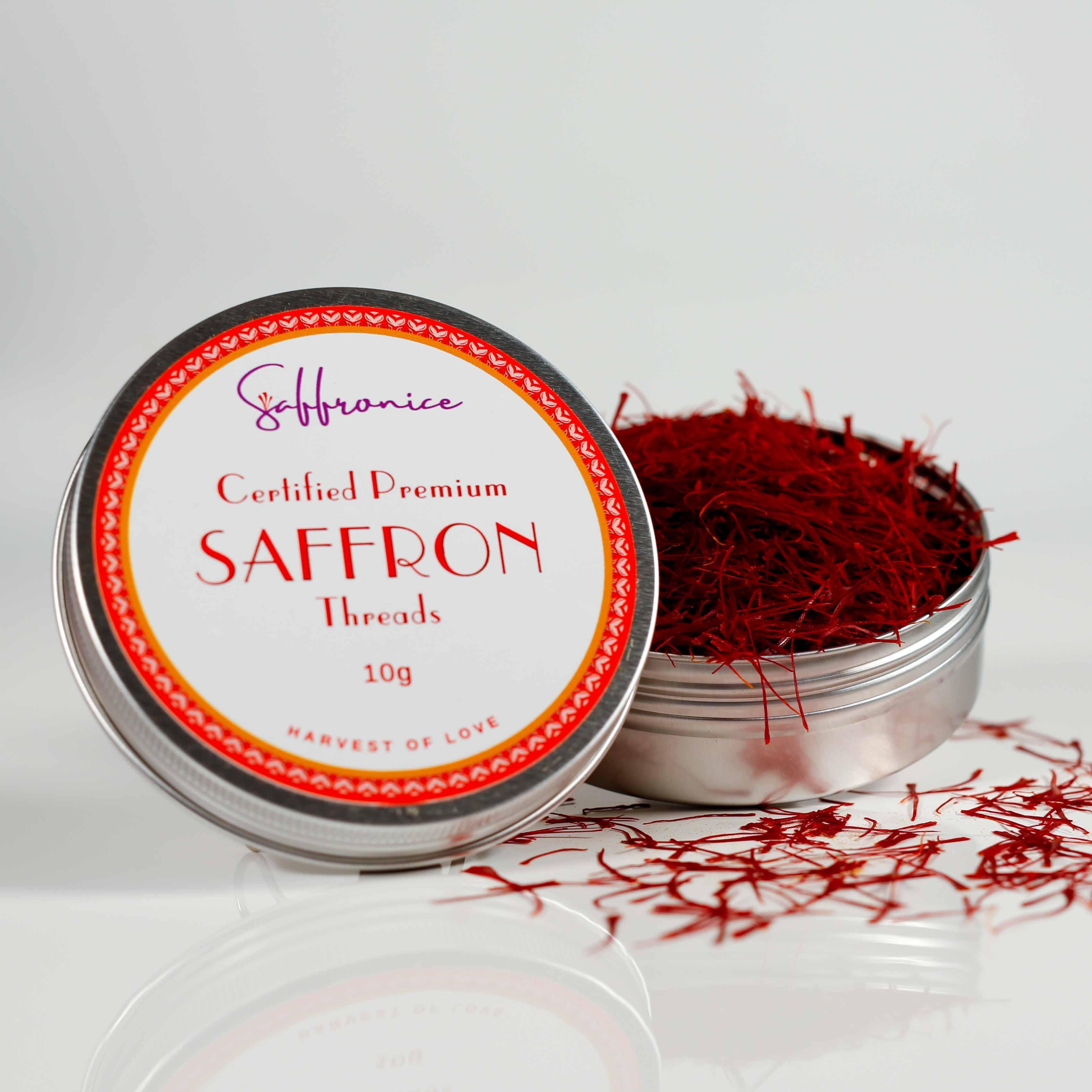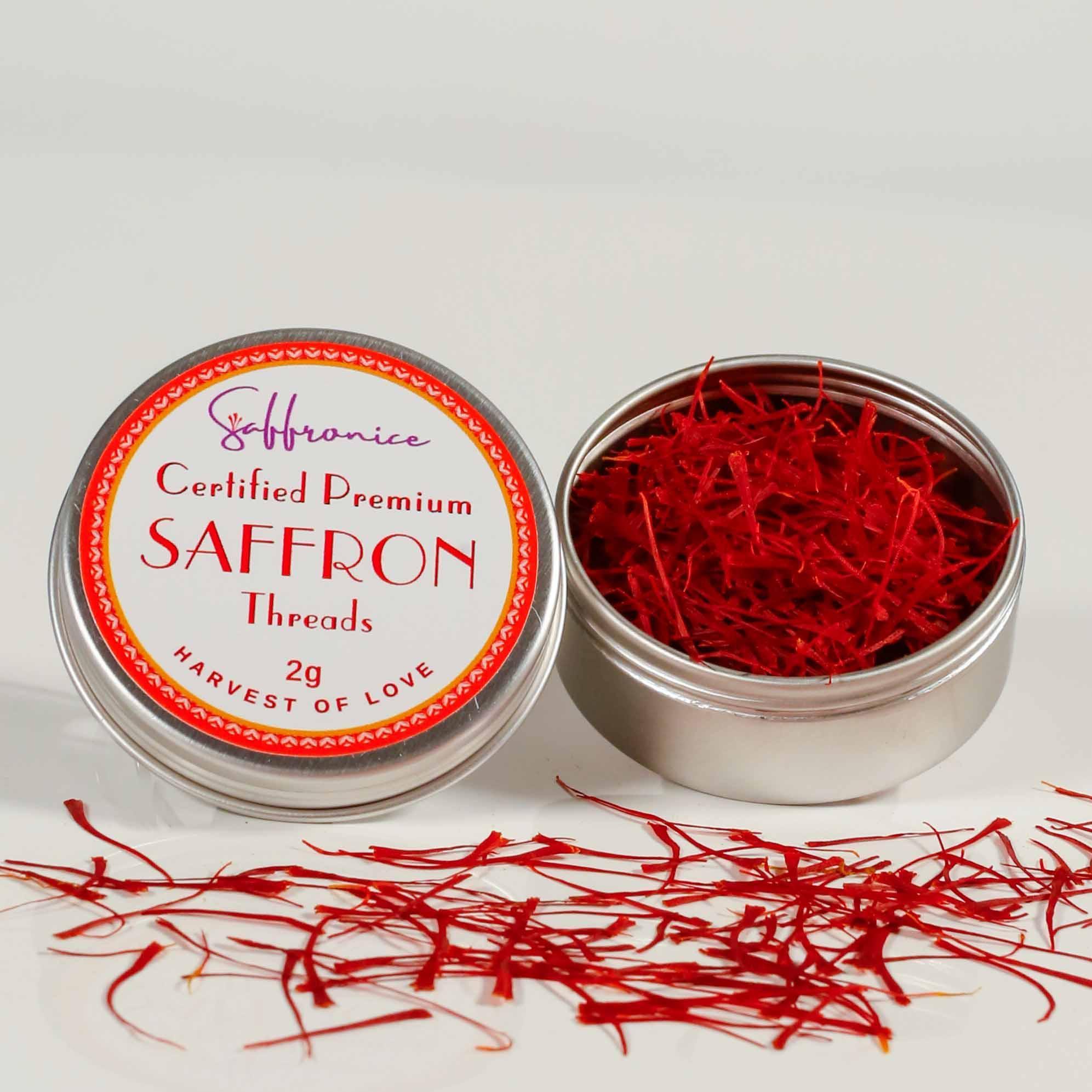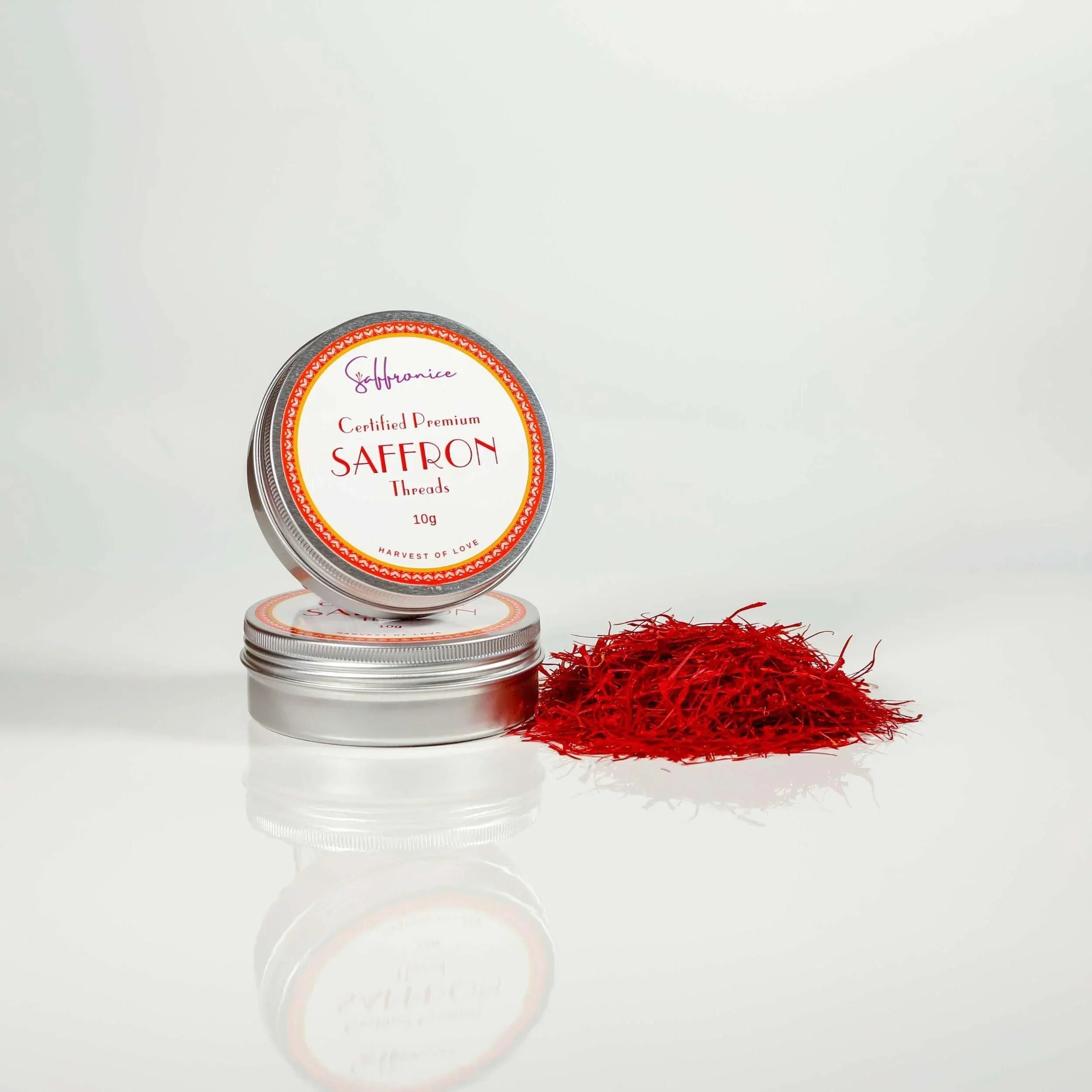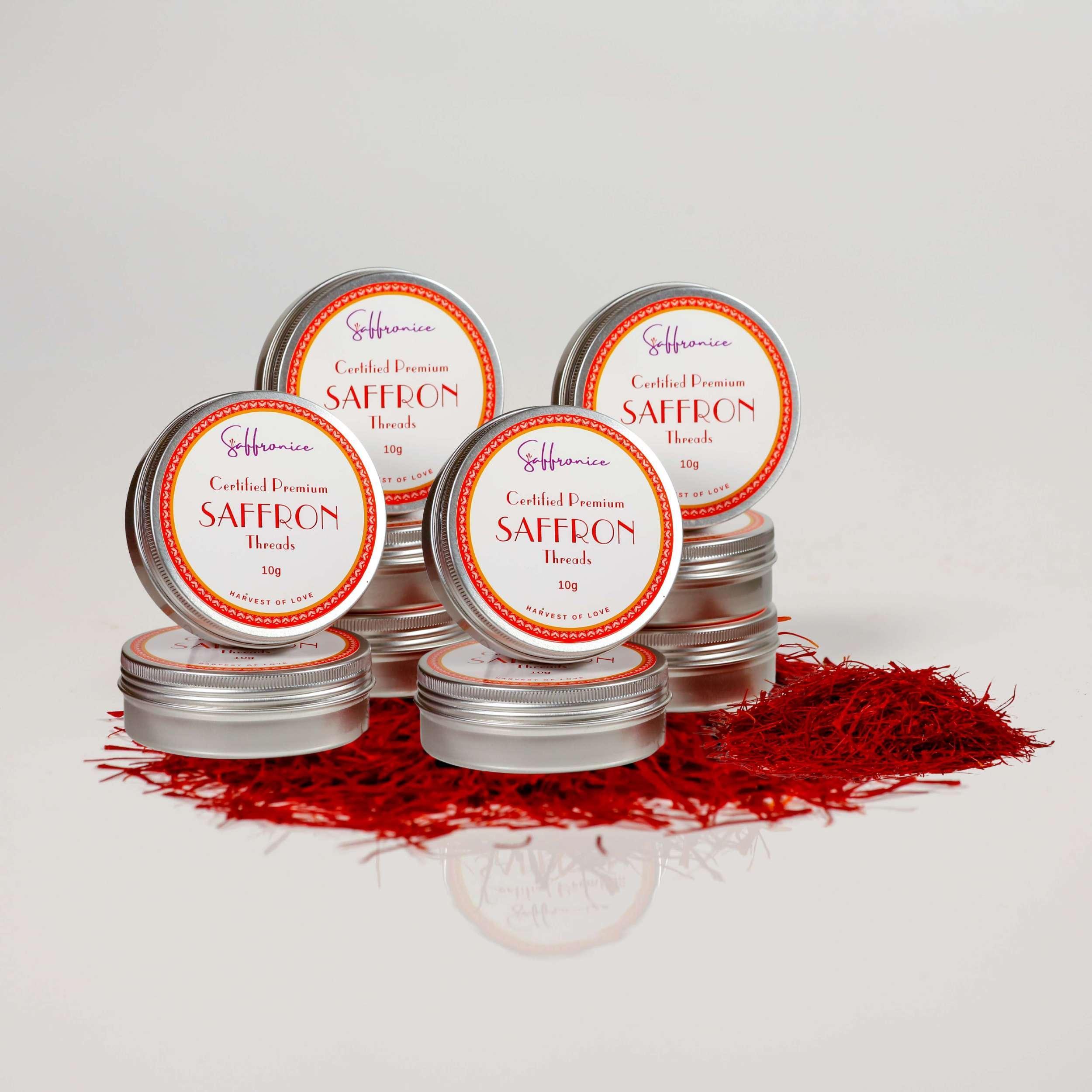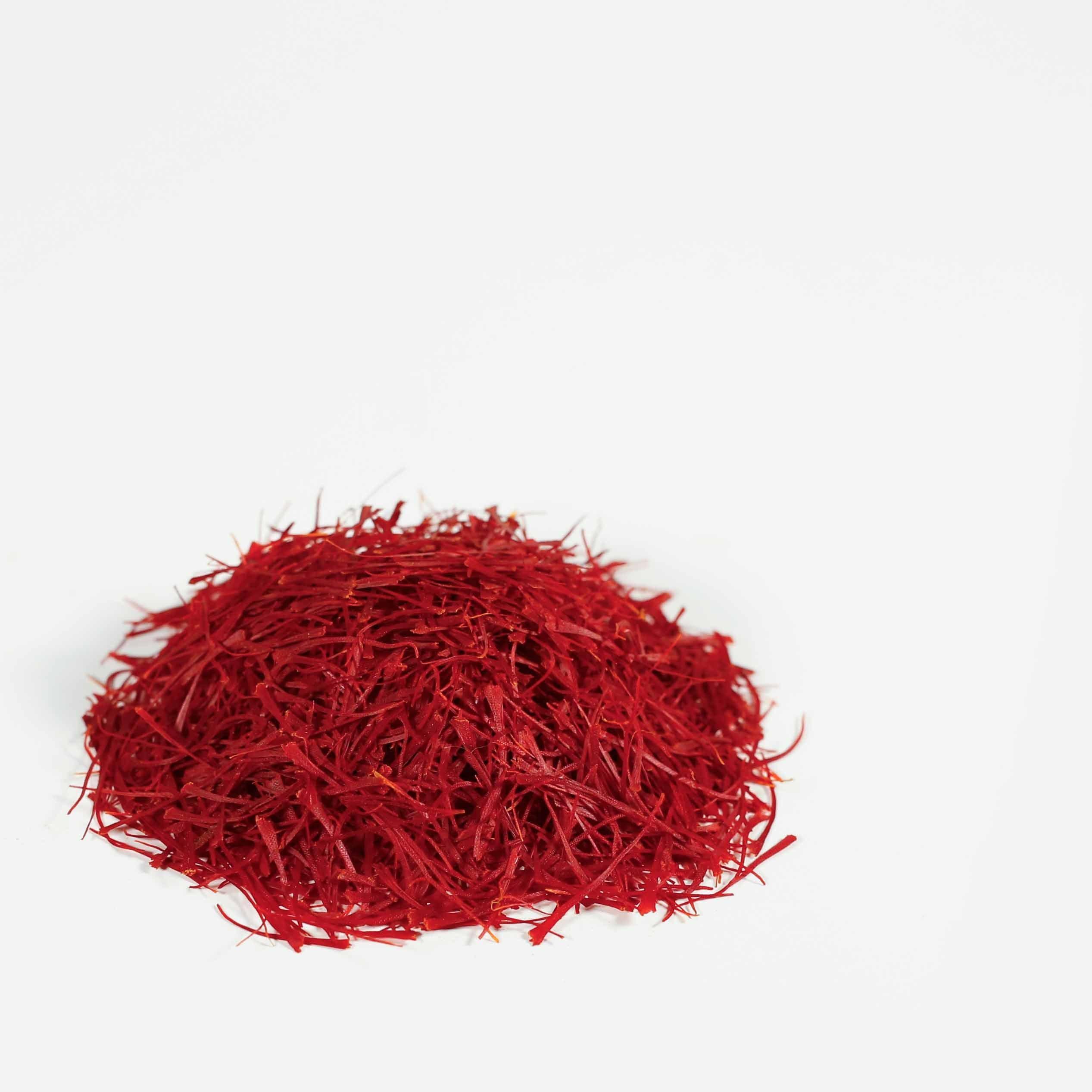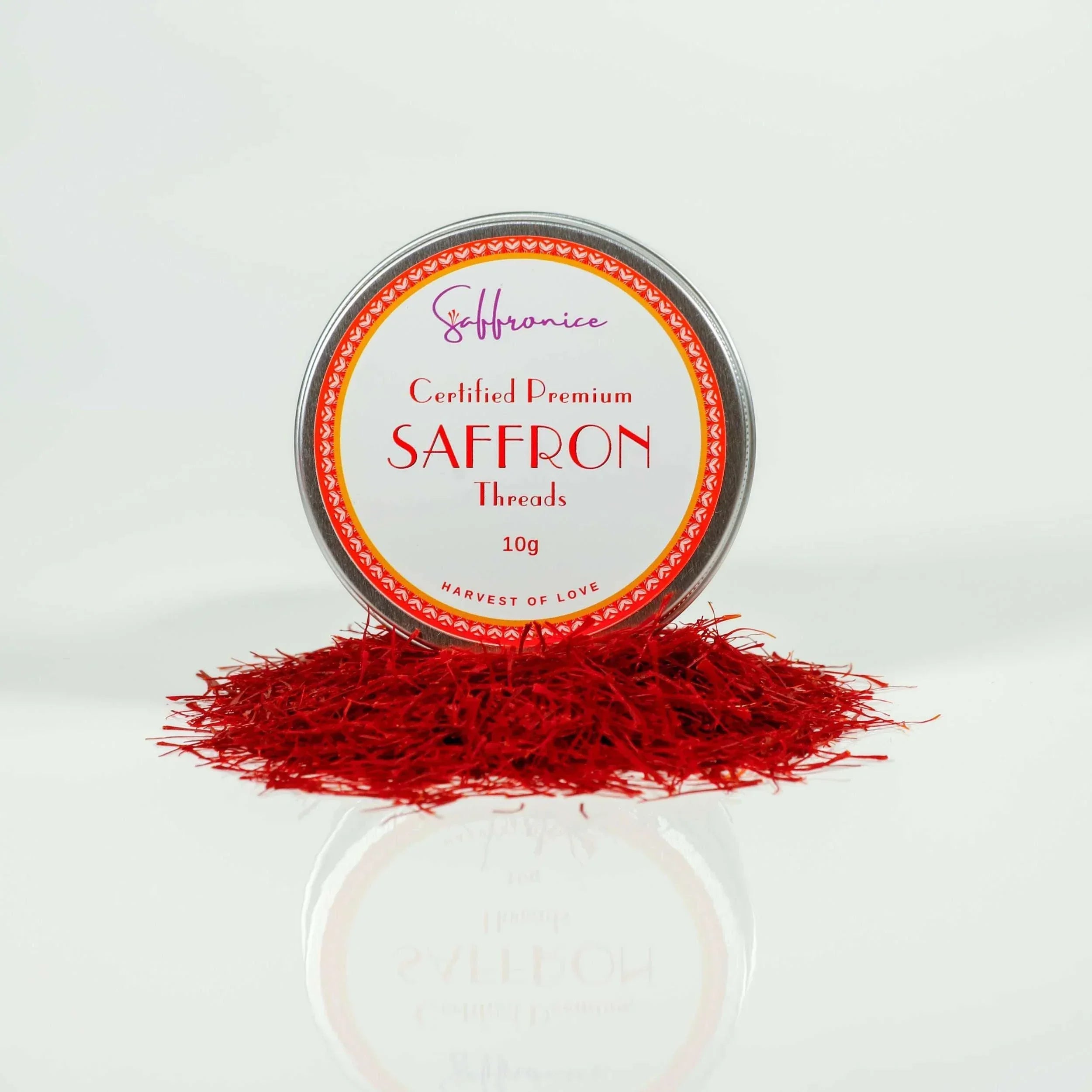Saffron, often hailed as the world's most precious spice, has a rich history rooted in various cultures. Derived from the vivid crimson stigmas of the saffron crocus (Crocus sativus), this spice not only imparts a unique flavor but also holds significant cultural and culinary importance.
In this guide, we will explore the fascinating journey of saffron from its cultivation process to its cultural significance and culinary uses. For those looking to incorporate this exquisite spice into their cooking, understanding where to buy saffron and how to select the best for your culinary needs is essential. This guide will uncover the secrets behind choosing the finest saffron threads used by professional chefs, ensuring quality and authenticity in your culinary endeavors.

1. The Saffron Crocus Plant: Nature's Golden Flower
The saffron crocus plant, Crocus sativus, stands out in the botanical world for its unique ability to produce saffron, one of the most expensive spices globally. This plant is characterized by its vibrant crimson stigmas and styles, which are meticulously harvested and dried to create saffron threads.
Crocus sativus has several distinctive features:
- Height: Typically grows between 20-30 cm.
- Flowers: Each plant can produce up to four flowers, ranging from light pastel lilac to dark mauve.
- Stigmas: The flowers contain three-pronged styles with crimson stigmas, the part harvested for saffron.
The plant thrives in Mediterranean climates, enduring temperatures from -10°C to 40°C. Successful cultivation involves planting corms (bulb-like organs) around June in well-drained clay soils enriched with organic matter.
Historical Theories and Origins
Historical evidence suggests that saffron's origins trace back to ancient Iran, then known as Persia. Ancient texts and archaeological findings indicate that Persian saffron was highly valued for its medicinal properties and use as a dye.
Iran remains the world's largest producer of saffron, contributing around 88% of the global supply. Its dominance can be attributed to optimal growing conditions and centuries of cultivation expertise.
Major Regions of Production Today
Today, saffron is produced in several key regions:
- Iran: Known for its high-quality saffron with deep red stigmas and strong aroma.
- Spain: Producers like La Mancha are famous for their aromatic and slightly milder saffron.
- India: Particularly Kashmir, where the saffron is prized for its dark maroon-purple hue and robust flavor.
Each region's specific climate and soil conditions contribute to subtle variations in flavor and color, making regional saffron unique.
Understanding where saffron comes from enhances appreciation for this exquisite spice. Its journey from ancient Persia to modern kitchens worldwide underscores its timeless appeal.

2. From Ancient Civilizations to Modern Times: A Brief History of Saffron
Saffron's journey through history is as vibrant as its deep crimson threads. In ancient civilizations like Assyria and Greece, saffron was highly prized not only as a spice but also as a dye. Assyrians used it in their rituals and medicines, while Greeks wove it into their mythologies and artistic expressions. The Greeks valued saffron so much that it was often depicted in frescoes, showcasing its importance in their culture.
During the Middle Ages, the Moors played a crucial role in the spread of saffron cultivation across Europe. Their advanced agricultural techniques helped reintroduce saffron to Spain, which became a significant hub for its production. This period saw the spice being transported by Crusaders returning from the Holy Land, further embedding saffron into European culinary and medicinal practices.
The influence of saffron is also evident in art and literature. Michelangelo, for instance, utilized saffron as a pigment in some of his masterpieces, demonstrating its versatility beyond culinary uses.
Understanding the historical significance of saffron provides valuable context for its enduring allure today. The threads of this golden spice weave through centuries, cultures, and traditions, making it an irreplaceable element in both history and modern times.

3. The Art of Cultivating Saffron: From Planting to Harvesting
Understanding the intricate process of saffron cultivation is key to appreciating why this spice holds such immense value.
Saffron Cultivation Process
1. Planting the Bulbs
Saffron crocus bulbs, known as corms, are typically planted in June in the Northern Hemisphere. Corms are lodged 7-15 cm deep in well-drained, friable clay soils rich in organic content. Proper spacing and depth are crucial for optimal yields.
2. Growth Cycle
The saffron crocus thrives in Mediterranean climates, tolerating temperatures from -10 °C to 40 °C. During the growth period, irrigation is necessary if natural moisture is insufficient.
3. Flowering
By October, the crocus flowers bloom, displaying hues from light pastel lilac to dark mauve. Each flower produces three vibrant crimson stigmas—the precious threads harvested for saffron.
Traditional Harvesting Methods
Traditional methods of harvesting saffron are labor-intensive and require precision:
- Timing: Farmers hand-pick each flower at dawn when blooms are fresh and open.
- Technique: Delicate stigmas are carefully separated from the flower using meticulous hand-picking techniques.
- Volume: Approximately 150,000 flowers are required to produce just one kilogram of dried saffron, underscoring the intensive labor involved.
Farmers have honed these traditional methods over centuries, ensuring that the delicate stigmas retain their quality and potency from field to table.

4. Exploring Regional Variations in Saffron Production
Saffron's unique qualities vary significantly depending on its region of production. Here’s a closer look at some of the most notable varieties:
Iranian Saffron
Iran dominates the global saffron market, producing around 88% of the world's supply. Known for its deep red color and potent fragrance, Iranian saffron is often considered the gold standard. The stigma threads are long and thick, offering a robust flavor profile.
Spanish Saffron
Spanish saffron, particularly from the La Mancha region, is renowned for its mellow aroma and flavor. Spanish varieties are usually graded by government standards into categories like Coupe and Mancha, ensuring consistent quality. This saffron is used extensively in dishes like paella.
Kashmiri Saffron
Kashmiri saffron stands out with its dark maroon-purple hue and earthy notes. It's one of the rarest and most expensive types, prized for its high crocin content, which imparts a vibrant color to dishes. Kashmiri saffron is a staple in Indian cuisine.
Afghan Saffron
Afghan saffron has gained recognition for its quality, rivalling even the best Iranian saffrons. Grown primarily in Herat province, it features slender threads with an intense aroma and taste. Afghan saffron has become a significant player in the global market due to its excellent quality.
These regional variations highlight how terroir influences the characteristics of this precious spice. Each type brings unique attributes to culinary applications, enriching dishes with distinct flavors and aromas.

5. Why Is Saffron So Expensive? Understanding Its Economics
Saffron is often referred to as the world's most expensive spice, with prices reaching $5,000 per kilogram or higher. Several factors contribute to this high market value:
- Labor-Intensive Harvesting: Each saffron flower produces only three stigmas, which are hand-picked and then dried. It takes around 150,000 flowers to produce just one kilogram of saffron. This meticulous process requires extensive manual labor.
- Limited Growing Conditions: Saffron crocus (Crocus sativus) thrives in specific climates, particularly those with hot summers and cold winters. Regions like Iran, Spain, and India are ideal, but the plant's environmental needs restrict large-scale cultivation.
- Time-Consuming Cultivation: The saffron crocus blooms for a short period each year, usually in October. The planting, growing, and harvesting cycles are lengthy and require careful timing.
- High Quality Control: Authentic saffron must meet stringent quality standards to ensure its rich color, aroma, and flavor. This quality assurance adds to the production costs.
Understanding these factors clarifies why saffron commands such a premium price in global markets.

6. Beyond Flavor: The Cultural Significance and Culinary Uses of Saffron
Saffron's cultural significance spans centuries, evident in various traditions and culinary practices:
- Greek Mythology: Celebrated for both its color and supposed healing properties.
- Ancient Rome: Used in perfumes, medicines, and as an aphrodisiac.
- Indian Ayurveda: Known for its therapeutic attributes, used in Ayurvedic medicine to treat ailments like arthritis and menstrual discomfort.
In the culinary world, saffron is a prized ingredient:
- Middle Eastern Cuisine: Integral to dishes like Persian Tahdig and Moroccan Tagine.
- Spanish Paella: Infusing the rice with its distinct flavor and vibrant hue.
- Italian Risotto alla Milanese: Enhancing the dish with its unique taste.
Saffron's versatility makes it a staple in many kitchens worldwide, reflecting its rich history and diverse applications.

FAQs (Frequently Asked Questions)
Where does saffron come from?
Saffron originates from the saffron crocus plant (Crocus sativus). Historical theories suggest it was first cultivated in Iran, with later cultivation in regions like Spain and India.
What is the history of saffron as a spice?
Saffron has a rich history dating back to ancient civilizations such as the Assyrians and Greeks, where it was valued both as a spice and a dye. The Moors significantly influenced its cultivation in Europe during the Middle Ages, and it has been referenced in various works of art and literature, including those by Michelangelo.
How is saffron cultivated?
The saffron cultivation process involves planting bulbs and carefully harvesting the delicate stigmas by hand. Traditional methods include picking each flower at dawn to ensure optimal quality.
What are the different varieties of saffron?
Saffron varieties differ by region, with notable types including Iranian, Spanish, Kashmiri, and Afghan saffrons. Each variety has unique characteristics that influence its flavor and quality.
Why is saffron so expensive?
Saffron is one of the most expensive spices in the world, often costing $5,000 per kilogram or higher. This high price is due to the labor-intensive process of harvesting, where each flower's stigmas must be hand-picked.
What cultural significance does saffron hold?
Saffron plays a significant role in various cultures' cuisines, spanning from Greece to India. It is also utilized in Ayurvedic medicine and has been an important ingredient throughout history for its flavor and medicinal properties.


